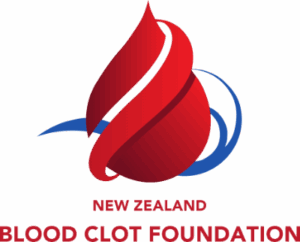Frequently Asked Questions
Clear answers to help you better understand blood clots and their impact
Whether you’re newly diagnosed, supporting a loved one or simply looking to learn more, our FAQ section provides reliable answers to the most common questions about blood clots. Here you’ll find information on symptoms, prevention, treatment and recovery all designed to help you feel informed and supported.
If your question isn’t answered here, please reach out to us directly – our team is always here to help.
What fraction of people with a DVT get a PE?
The risk varies depending on the location of the clot. The risk for a PE increases the higher up in the leg the DVT occurs. For example, a calf DVT has a lower risk of breaking off and becoming a PE than a clot behind the knee or one in the groin or pelvic veins. Essentially, the larger the vein with the clot, the greater the risk of developing a PE.
How do I know a DVT isn’t simply a pulled muscle?
A pulled calf muscle usually gets better in a day or two. Another sign of a DVT is bluish or reddish skin discoloration, and skin that is warm to touch. These other signs do not usually happen with a pulled muscle.
How is a Pulmonary Embolism diagnosed?
If a scan does not identify a clot, but one is still suspected, a pulmonary angiogram is performed. A catheter is threaded through a vein in the groin, passed through the heart, and into the pulmonary artery. Contrast dye is then injected, and X-rays are taken to monitor the blood flow in the lung. The angiogram will give a definite diagnosis as to the presence of a clot. Occasionally, an echocardiogram will show abnormalities in heart function, particularly in the right ventricle, as it meets resistance in pumping blood into the lungs
What are normal SpO2 levels after having a PE?
The SpO2 reading on a pulse oximeter shows the percentage of oxygen in someone’s blood. A reading over 95 is normal. Patients should be concerned when it gets under 90. Anything below 90 is not normal and you should seek immediate care.
Should I wear a medical alert ID bracelet?
Wearing a medical alert ID bracelet can be a good idea so that those helping you in case of an emergency will know that you are on an anticoagulant.
What if I re-clot on the anticoagulant?
If taking your medication as prescribed, and you did not miss any doses, the chance that you will re-clot is only 1-2 % at most. If you ever develop a blood clot when you are on anticoagulants, 3 most likely explanations are, 1. You have not been compliant with your medication, 2. You did not take the drug correctly i.e., you did not take with food, or 3. You are taking other medication which interfered with the anticoagulant. A good example of drug interference would be anti-seizure medication.
What are my chances of having another blood clot?
The majority of patients do not have a repeat blood clot. However, risk is higher than for the general population whenever you had a clot. The degree of increased risk depends upon where the clot was, how many you clots you had, family history of blood clots, presence of blood clotting disorders, and any underlying medical conditions.
How serious is the damage to my body after my blood clot?
Most of the time there will be no damage. The two places you could have lasting issues are in your leg and in your lung. Damage in the leg would be from both the blood clot and the destruction of the valves that move blood along and cause swelling in the leg. Most of the time this is just an inconvenience, but if you get significant swelling it may prevent you from doing a job where you must stand up repeatedly. You may need to wear compression stockings to squeeze the blood back to the upper part of the body. As far as the lungs are concerned, 96% of the time there will be no serious damage, but 3 to 4% of patients develop post thromboembolic pulmonary hypertension where you might have some continued shortness of breath that requires a specialist to repair the damage done to the vessels in the lungs.
How long will it take for me to physically recover?
It takes around 3 months to complete active treatment of VTE, although recovery time varies per individual, so there is no standard for how long it will take to recover.
